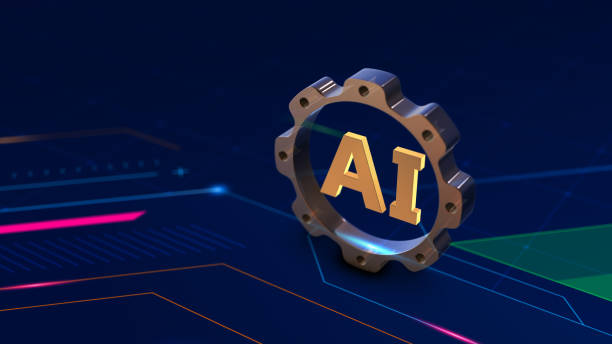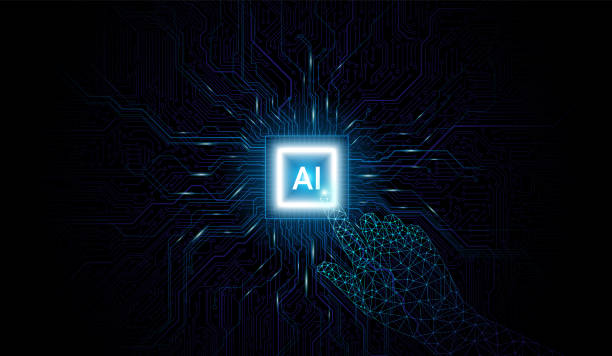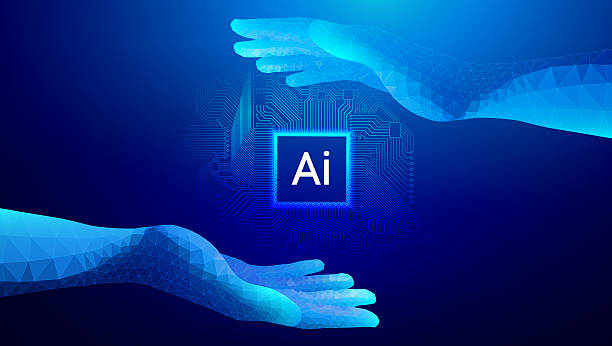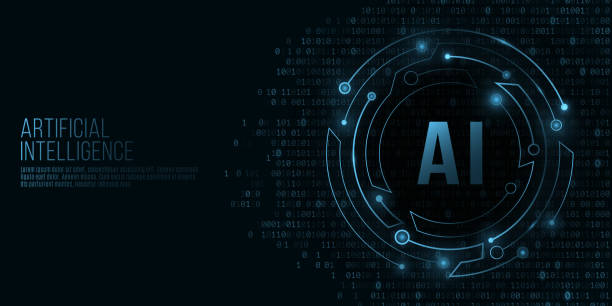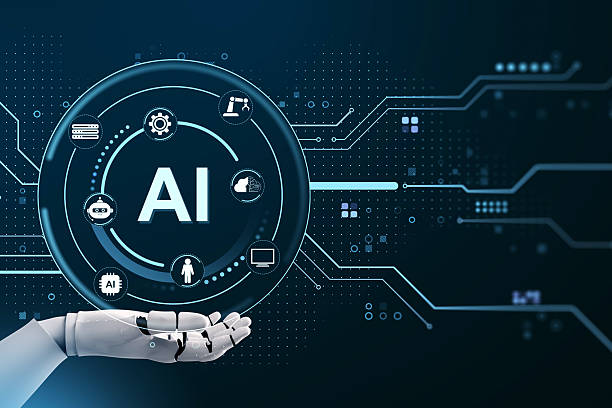What is Artificial Intelligence and What are its Applications?
#Artificial_Intelligence (AI) refers to a branch of computer science that aims to build machines capable of performing tasks that typically require human intelligence.
These tasks include learning, reasoning, problem-solving, language understanding, and pattern recognition.
Applications of artificial intelligence include self-driving cars, facial recognition, language translation, fraud detection, recommender systems, and virtual assistants like Siri and Alexa.
Artificial intelligence has the potential to transform various industries, including healthcare, education, transportation, and manufacturing.
In short, artificial intelligence is an effort to simulate and create intelligence in machines so that they can perform tasks that humans do with greater accuracy and speed.
Developing artificial intelligence requires a deep understanding of various sciences, including computer science, mathematics, statistics, and cognitive science.
Due to recent advances in these areas, artificial intelligence has now become a very active and growing field.
Currently, artificial intelligence is present in many aspects of our lives, and it is expected to play a much more important role in the future.
From improving medical diagnosis to optimizing supply chains, artificial intelligence can help us solve complex problems and improve efficiency.
Tired of your company’s website not being seen as it should be and losing potential customers? Solve this problem forever with professional and effective website design by Rasaweb!
✅ Increase brand credibility and gain customer trust
✅ Attract targeted sales leads
⚡ Contact us now for a free consultation!
How Does Machine Learning Empower Artificial Intelligence?
Machine Learning is one of the main sub-branches of artificial intelligence that allows machines to learn from data without explicit programming.
In fact, instead of giving machines step-by-step instructions, they use algorithms and statistical models to identify patterns and relationships in the data and make decisions based on them.
There are different types of machine learning algorithms, including supervised learning, unsupervised learning, and reinforcement learning.
Supervised learning involves training a model using labeled data, meaning the data has specific inputs and outputs.
Unsupervised learning uses unlabeled data to identify patterns and structures.
Reinforcement learning allows an agent to learn through trial and error, receiving rewards for desirable behaviors and penalties for undesirable behaviors.
Machine learning plays a vital role in the development of artificial intelligence, as it allows machines to automatically learn from data and improve their performance.
This is especially important when the data is very large or complex and patterns cannot be identified manually.
Neural Networks and Deep Learning: A Revolution in Artificial Intelligence
Artificial Neural Networks are computational models inspired by the structure and function of the human brain.
These networks consist of a large number of processing units called neurons, which are connected in different layers.
Each neuron receives inputs, processes them, and produces an output.
Deep Learning is a subset of machine learning that uses neural networks with many (deep) layers to learn complex patterns from data.
Deep learning has achieved remarkable advances in various fields in recent years, including image recognition, natural language processing, and speech recognition.
For example, deep neural networks can recognize images with high accuracy, translate text into different languages, and convert speech into text.
One of the reasons for the success of deep learning is its ability to learn important features from data automatically.
In traditional machine learning methods, engineers must manually extract important features, but in deep learning, networks can learn these features automatically from data.
Also, deep learning requires large amounts of data for training.
With increasing access to data and computing power, deep learning has become a powerful tool for solving complex problems.
Here is a simple table to compare traditional and deep neural networks:
| Feature | Traditional Neural Networks | Deep Neural Networks |
|---|---|---|
| Number of Layers | Low (usually 2-3 layers) | High (more than 3 layers) |
| Feature Extraction | Manual | Automatic |
| Amount of Data Required | Less | More |
| Applications | Simpler Problems | More Complex Problems like Image Recognition and Natural Language Processing |
Natural Language Processing: Understanding and Generating Human Language by Machines
Natural Language Processing is a branch of artificial intelligence that allows machines to understand and generate human language.
The goal of natural language processing is to build systems that can analyze text, extract information, answer questions, translate text, and generate new text.
Natural language processing uses various techniques including machine learning, deep learning, statistics, and linguistics.
Some important applications of natural language processing include machine translation, speech recognition, sentiment analysis, text summarization, and chatbots.
Machine translation allows machines to translate text from one language to another.
Speech recognition allows machines to convert speech into text.
Sentiment analysis allows machines to identify the emotions in text.
Text summarization allows machines to produce a summary of a long text.
Chatbots are programs that can interact with humans through text or voice.
With recent advances in deep learning, natural language processing has become a very active and growing field.
Large language models like GPT-3 and BERT have achieved very good results in many natural language processing tasks.
Tired of your company’s website not being seen as it should be and losing potential customers? Solve this problem forever with professional and effective website design by Rasaweb!
✅ Increase brand credibility and gain customer trust
✅ Attract targeted sales leads
⚡ Contact us now for a free consultation!
Computer Vision: Eyes for Computers
Computer Vision is a branch of artificial intelligence that allows machines to understand images and videos.
The goal of computer vision is to build systems that can recognize objects in images, understand scenes, track motion, and reconstruct images.
Computer vision uses various techniques including machine learning, deep learning, geometry, and image processing.
Some important applications of computer vision include facial recognition, self-driving cars, quality inspection, medical diagnosis, and robotics.
Facial recognition allows machines to recognize faces in images and identify individuals.
Self-driving cars use computer vision to understand their surroundings and drive without human intervention.
Quality inspection uses computer vision to check products and detect defects.
Medical diagnosis uses computer vision to analyze medical images and diagnose diseases.
Robotics uses computer vision to understand its surroundings and perform tasks.
With recent advances in deep learning, computer vision has become a very active and growing field.
Convolutional Neural Networks have been particularly successful in computer vision.
The Future of Artificial Intelligence: Opportunities and Threats
The future of #Artificial_Intelligence is full of opportunities and threats.
On the one hand, artificial intelligence has the potential to solve many of the world’s major problems, including disease, poverty, and climate change.
On the other hand, artificial intelligence can lead to job loss, inequality, and abuse.
Therefore, it is very important that artificial intelligence is developed responsibly and with consideration for its social and ethical implications.
Some key opportunities of artificial intelligence include: improving healthcare through more accurate diagnoses and more personalized treatments, increasing productivity and efficiency in various industries, creating new products and services, and solving complex scientific and engineering problems.
Some of the key threats of artificial intelligence include: job loss due to automation, inequality due to the concentration of wealth in the hands of a few, misuse of artificial intelligence for malicious purposes such as autonomous weapons, and discrimination and inequality due to biased algorithms.
To ensure that artificial intelligence benefits humanity, appropriate laws and regulations must be enacted, education in the field of artificial intelligence must be promoted, and research in the field of ethics and safety of artificial intelligence must be supported.
The future of artificial intelligence is uncertain, but one thing is certain: artificial intelligence will play an important role in shaping our future.
Applications of Artificial Intelligence in Various Industries
Artificial intelligence is currently used extensively in various industries, and these applications are increasing day by day.
Here are some of the most important applications of artificial intelligence in various industries: In healthcare, artificial intelligence is used for diagnosing diseases, developing drugs, providing personalized care, and improving hospital management.
In the financial industry, artificial intelligence is used for fraud detection, risk management, providing financial advice, and improving customer service.
In the retail industry, artificial intelligence is used for product recommendations, inventory management, improving the shopping experience, and optimizing pricing.
In the manufacturing industry, artificial intelligence is used for automation, quality control, predictive maintenance, and improving productivity.
In the transportation industry, artificial intelligence is used for self-driving cars, route optimization, traffic management, and improving safety.
Click here to preview your posts with PRO themes ››
Here is a table of applications of artificial intelligence in the transportation industry:
| Application | Description |
|---|---|
| Self-Driving Cars | Using artificial intelligence to drive without human intervention |
| Route Optimization | Finding the best route to reduce travel time and fuel consumption |
| Traffic Management | Reducing traffic congestion and improving traffic flow |
| Improving Safety | Reducing accidents and increasing road safety |
Ethical and Social Challenges of Artificial Intelligence
The development and use of artificial intelligence brings important ethical and social challenges.
One of the most important challenges is the issue of discrimination and inequality.
Artificial intelligence algorithms can be trained based on historical data that may contain discrimination, and as a result, make decisions that are unfair or discriminatory.
Another challenge is the issue of privacy.
Artificial intelligence systems often require large amounts of personal data to function properly.
This can lead to concerns about data misuse and privacy violations.
Other challenges include job loss due to automation, accountability for decisions made by artificial intelligence systems, and the risk of using artificial intelligence for malicious purposes.
To address these challenges, appropriate laws and regulations must be enacted, transparency in the design and development of algorithms must be promoted, education in the field of artificial intelligence ethics must be supported, and research in the field of safety and security of artificial intelligence must be conducted.
The discussion of ethics in #Artificial_Intelligence is very important and requires serious attention from researchers, policymakers, and society.
Artificial intelligence should be developed in a way that benefits everyone and prevents harm to individuals and society.
Did you know that a poorly designed online store can drive away up to 70% of your potential customers? Rasaweb transforms your sales by designing professional and user-friendly online store websites.
✅ Significant increase in sales and revenue
✅ Full optimization for search engines and mobile
⚡ [Get a free consultation from Rasaweb]
Tools and Programming Languages Used in Artificial Intelligence
Various tools and programming languages are used to develop artificial intelligence systems.
Some of the most popular programming languages used in artificial intelligence include Python, R, Java, and C++.
Python is widely used in artificial intelligence due to its simplicity, flexibility, and the presence of rich libraries such as TensorFlow, PyTorch, and Scikit-learn.
R is used for statistical analysis and modeling and is used in areas such as data mining and machine learning.
Java and C++ are used to develop high-performance systems and large-scale applications.
In addition to programming languages, there are various tools for developing and deploying artificial intelligence systems.
These tools include integrated development environments (IDEs), cloud platforms, machine learning frameworks, and data visualization tools.
Choosing the right tool and programming language depends on the specific needs of the project and the expertise of the development team.
However, Python is often recommended as the main language for developing artificial intelligence systems due to its ease of use and access to powerful libraries.
If you are interested in learning artificial intelligence, learning Python and working with TensorFlow and PyTorch libraries can be a good starting point.
How to Learn Artificial Intelligence? Resources and Training Paths
Learning #Artificial_Intelligence can be an exciting and rewarding journey.
There are various resources and training paths for learning artificial intelligence, including online courses, books, in-person training, and practical projects.
To begin, you can start by learning the basic concepts of mathematics, statistics, and computer science.
Then, you can learn programming languages such as Python and R.
After learning programming languages, you can learn the concepts and techniques of machine learning and deep learning.
Click here to preview your posts with PRO themes ››
There are numerous online courses on platforms such as Coursera, edX, and Udacity that teach the concepts and techniques of artificial intelligence.
Also, there are numerous books on artificial intelligence that can help you learn this field.
In addition to courses and books, doing practical projects can also help you learn artificial intelligence.
By doing practical projects, you can apply the concepts and techniques learned in practice and develop your skills.
Finally, to succeed in learning artificial intelligence, you must be patient, persevering, and constantly continue to learn and develop your skills.
Artificial intelligence is a complex and dynamic field, and to succeed in this field, you must always be learning.
FAQ
| Question | Answer |
|---|---|
| What is Artificial Intelligence? | It is the simulation of human intelligence in machines that are programmed to think like humans and mimic their actions. |
| What are the main branches of Artificial Intelligence? | They include Machine Learning, Deep Learning, Natural Language Processing, Computer Vision, and Robotics. |
| What is Machine Learning? | It is a branch of AI that focuses on enabling systems to learn from data and identify patterns without explicit programming. |
| Mention examples of AI applications in our daily lives. | Voice assistants (such as Siri and Alexa), recommendation systems in Netflix and Amazon, self-driving cars, and facial recognition programs. |
| What is Deep Learning? | It is a subset of Machine Learning that uses multiple-layered (deep) artificial neural networks to process large amounts of data. |
| What is Natural Language Processing (NLP)? | It is a branch of AI that focuses on enabling computers to understand, interpret, and generate human language. |
| What are some of the ethical concerns related to AI? | They include bias in data, privacy, job loss, and accountability in case of errors. |
| What are the main benefits of AI? | Increased efficiency, improved decision-making, automation of repetitive tasks, and detection of complex patterns in data. |
| How is AI used in the healthcare field? | In diagnosing diseases, discovering drugs, analyzing medical images, and providing personalized patient care. |
| How do you see the future of AI? | It is expected to continue evolving at a rapid pace, impacting all aspects of human life, from industry to education and entertainment. |
And other services of Rasa Web Advertising Agency in the field of advertising
Intelligent Sales Automation: An innovative platform to improve website traffic increase with Google Ads management.
Intelligent Google Ads: A dedicated service to grow website traffic increase based on the use of real data.
Intelligent Reporting: A new service to improve SEO ranking by optimizing key pages.
Intelligent Direct Marketing: A combination of creativity and technology to improve SEO ranking by optimizing key pages.
Intelligent Website Development: An effective tool to analyze customer behavior with the help of intelligent data analysis.
And more than hundreds of other services in the field of internet advertising, advertising consulting and organizational solutions
Internet Advertising | Advertising Strategy | Advertisement Report
Sources
What is artificial intelligence? Types, applications and challenges
,What is artificial intelligence? What are the applications of artificial intelligence?
,Artificial intelligence and the challenges of its activity
,Faradars introductory machine learning course
? Are you ready to take your business to the top in the digital world? Rasaweb Digital Marketing Agency, with its comprehensive and innovative solutions in SEO, Google Ads and , is your reliable partner on the path to success. Contact our experts today for a consultation and to start your digital transformation.
📍 Tehran, Mirdamad Street, next to the Central Bank, South Kazerun Alley, Ramin Alley No. 6
✉️
📱
📱
📞






